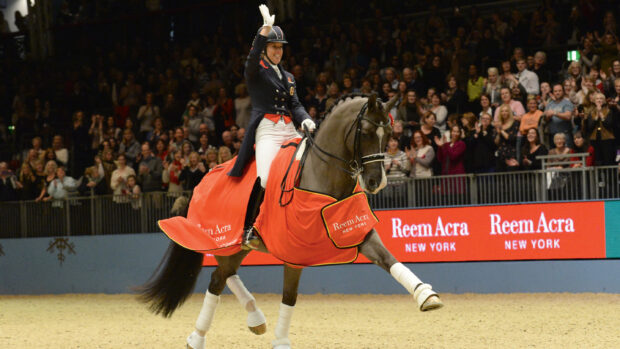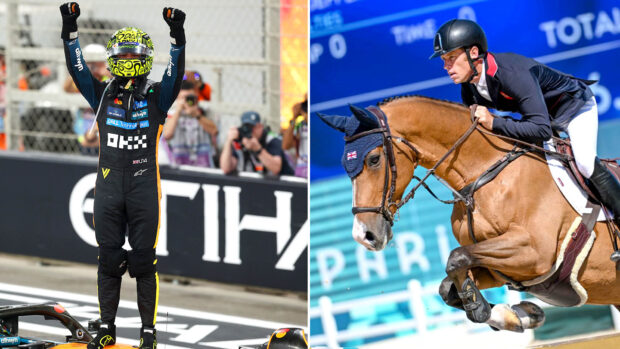Ulla Salzgeber and her chesnut Russian gelding, Rusty, ended the century as the German number ones in the dressage arena – they were the best of their country’s individuals at the European Championships in Arnheim in 1999.
Although Ulla began her quest to join the German dressage squad well past her 30th birthday, she is by no means a late developer.
The daughter of a German architect, she was a member of the German team that won the gold medal at the junior European dressage championships in Leverkusen at 1977.
She started riding at the age of eight, which was about the same time as she met a handsome, dark-haired boy of her own age at a riding club in Bad W”rishofen.
“At supper, I told my parents that I was goingto marry that boy. Everybody laughed, but that was exactly what happened many years later and I never regretted my choice.”
Ulla now lives with her daughter and husband, a natural health practitioner, in Bad W”rishofen in the south of Germany. It was after taking her legal exams, that she decided to make riding her profession. “Horses are my life,” she says. “I just cannot spent my day sitting in an office.”Dressage was always the discipline she liked best.
“I tried a little jumpingnow and then, but when the fences became higher, I did not feel comfortable. I admire riders like Bettina Overesch, but I am quite happy to stay in dressage.”
Ulla trains both horses and riders, although the teaching had to be reduced when her international career took off.
She trains mainly on her own under the critical eye of her husband, although national trainer Klaus Balkenhol also visits as often as he can. At competitions, she and Heike Kemmer, a fellow top-class competitor,help each other.
Ulla also spends time between shows in northern Germany (the centre of German horse shows) at Heike’s yard, Amselhof Walle, in Lower Saxony. “It is really nice to have a knowledgeable person such as Heike with me, as, at shows, Klaus Balkenhol has so many riders to look after,” she says.
“Rusty made a big step forward last year. His walk improved, as well as his piaffe and pirouettes. He’s more settled and I do not have to worry whether he will hot up any more.”
Ulla owes her partnership with Rusty to Bavarian Alexander Moksel, one of the biggest cattle dealers in Germany. This former sponsor of show jumper Ludger Beerbaum travels to Russia regularly and, through his excellent connections, finds horses few others would have the chance to see.
Although bred in Latvia, Rusty, who was the most successful dressage horse in 1999, according to the World Breeding Federation for Sport Horses (WBFSH), is more than 30% Hanoverian.
In fact, he looks more Hanoverian than a blood horse and is exactly the type of horse Ulla, who herself is 1.80m (5ft 11in) tall, favours. “I am not so keen on riding small horses – they should be at least 1.70m for me,” she says.
Her other horse Wallstreet is also tall, although according to his rider he looks a little more fragile “because of his fine legs”.
This elegant bay won the grand prix and grand prix special at the international show in Hanover. Now, he will have to continue the job Rusty started in Geneva with a double victory in grand prix and kr in the World Cup.
Wallstreet, a pure-bred Trakehner, comes from Kierow, the best-known stud for dressage horses in Russia. He is closely related to the late Reiner Klimke’s Trakehner stallion Biotop, whose sire Blesk is Wallstreet’s grandfather.



